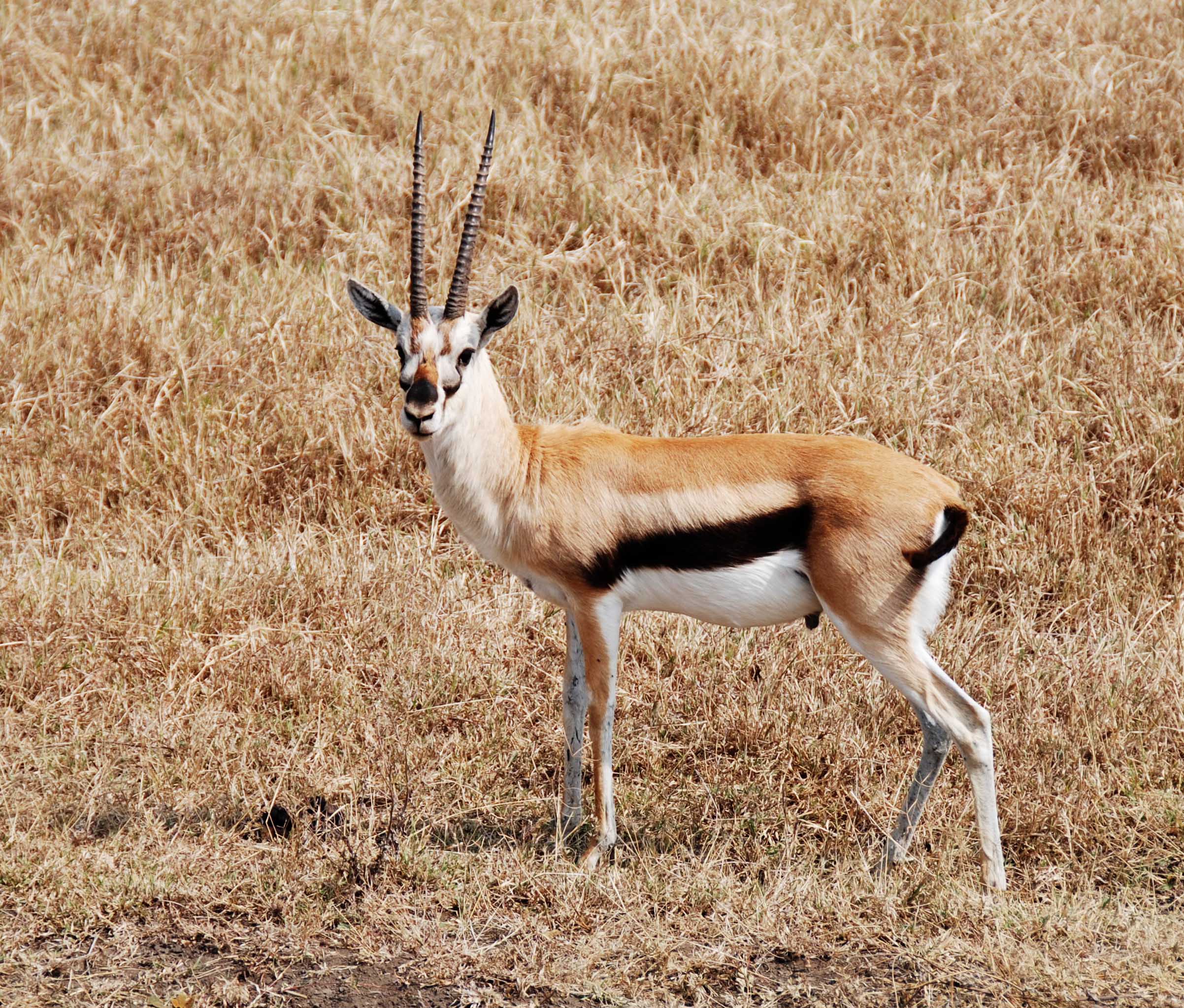| New Photos | Animal News | Animal Sounds | Animal Movies | Upload Photo | Copyright | Korean |
|---|
| Funny Animal Photos | Monsters in Animalia | Wiki Articles Fun Facts about Animals | Links | Home | Mobile A.P.A. |
|---|
| Image Info | Original File Name: Thompson_gazelle-Thomson\'s Gazelle (Gazella thomsoni).jpg Resolution: 2404x2046 File Size: 736317 Bytes Date: 2007:07:23 08:52:55 Upload Time: 2007:11:29 15:18:06 | |
| Author | Name (E-mail): Unknown | |
| Subject | Thomson's Gazelle (Gazella thomsoni) - Wiki | |
 |
| Email : E-Card | Poster | Web Master Delete Edit Info Admin |
| Description | Thomson's Gazelle (Gazella thomsoni) - Wiki
Thomson's Gazelle
The Thomson's Gazelle (Gazella thomsoni) is one of the best-known gazelles. It is named after explorer Joseph Thomson, and is often referred to as the "tommy". It is considered by some (e.g. Kingdon 1997) to be a subspecies of the Red-fronted Gazelle (G. rufifrons). Thomson's Gazelles live in Africa's savannas and grassland habitats, particularly the Serengeti region of Kenya and Tanzania, though they can also be found in Ethiopia, Somalia, and Sudan. They eat low vegetation and grass. Most of the water they need comes from what they eat. Description Thomson's Gazelles are 60???90 cm (24-35 in) tall and weigh 13???16 kg (29-35 lb). They have light brown coats with white underparts and a distinctive black stripe. Their horns are long and pointed with slight curvature. The white patch on their rump extends to underneath the tail but no further. An error sometimes made is the misidentification of Grant's Gazelles as Thomson's Gazelles. Although some Grant's do have the black stripe running across their sides, the white on their rump always extends above the tail. They can reach a speed of 80 km/h (50 mph) when chased by their enemy, the cheetah. A noticeable behaviour of Thomson's Gazelles is their bounding leap, known as stotting or pronking, used to startle predators and display strength. They often congregate with other hoofed mammals, or ungulates, such as wildebeest and zebra and usually live and migrate in herds with hundreds or thousands of other Thomson's Gazelles. Social structure and behaviour The social structure of gazelles consists of several types of groups. Male gazelles are territorial throughout their adult lives, though not usually before 2???3 years of age. During the non-territorial periods males usually spend their time in bachelor groups or as part of a mixed herd. Likewise females will form migratory female groups that travel through the males' territory. As the female groups pass through, the territorial males will try to herd them to prevent them from leaving. Adult male bucks with adjoining territories will engage in combat several times a day, fighting with their horns to establish dominance and the boundaries of their territories. In this way, the accepted boundaries of the territory can change on a daily basis. If a lone male, a bachelor group, or in some cases even an adolescent male fawn of a female gazelle should be passing through a territorial male's region, the male will chase the offender out of his territory. Interestingly, this territoriality does not extend to males of other species. The territory of a Thomson's gazelle and several other types of ungulates may overlap with no problem whatsoever. Occasionally, a Thomson's gazelle and a zebra or other ungulate will even appear to enjoy one another's company with great sociability. Breeding and life expectancy Female Thomson's Gazelles give birth to single fawns after a 5???6 month gestation period. They are unusual among ungulates in that they can give birth twice yearly, rather than just once. In the wild, Thomson's Gazelles can live up to 10???15 years, although they are preyed on by most African big cats and hyenas, and are (depending on the location), sometimes the preferred prey of cheetahs. Cheetahs are able to attain higher speeds, but Thomson's Gazelles can outlast cheetahs in long chases and are able to make turns more speedily. Half of all the fawns born will be lost to predators before reaching adulthood. http://en.wikipedia.org/wiki/Thomson's_Gazelle
| |||
| Comments |
| |||||||||||||
| Copyright Info | AnimmalPicturesArchive.com does not have the copyright for this image. This photograph or artwork is copyright by the photographer or the original artist. If you are to use this photograph, please contact the copyright owner or the poster. |
|
|
|
| |||||||
| CopyLeft © since 1995, Animal Pictures Archive. All rights may be reserved. | ||||||||
Stats